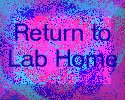

UV-VISIBLE SPECTROPHOTOMETRY
Measuring the concentrations of the active ingredients in sunscreen
Text readings: pages 157-159, 164-167, and pages 175 (starting with wavelength selectors) to 190 (including sample containers) in Skoog.
Background: Ultraviolet light is often broken into categories called UVA, UVB, and UVC as shown in Table I. UVC light is dangerous but is absorbed by the ozone layer and other gases in the atmosphere. As pollution depletes the ozone layer, more UVC radiation reaches the earth’s surface, and more cases of skin cancer and other diseases may result. UVB light is the region of the spectrum responsible for sunburn. Tanning occurs when UVB light activates the melanocytes found in the skin. UVA reportedly causes effects such as loss of collagen, decrease in the quantity of blood vessels, and an alteration in the skin’s connective tissue. Sunscreens protect against UVB light.
Table 1 Ranges of UV Light
Category |
Wavelength Range (nm) |
Health Effects |
UVC |
100-290 |
Dangerous, but absorbed by the atmosphere |
UVB |
290-315 |
Causes sunburn |
UVA |
315-400 |
Less dangerous |
In this experiment you will use a spectrophotometer to see what makes an effective sunscreen. You will also measure the concentration of two of the active ingredients in sunscreen, oxybenzone and ethylhexyl-p-methoxycinnamate in a weak and strong sunscreen formulation. This will involve a non-aqueous extraction and construction of a Beer’s Law plot.
Experimental: Determine the concentration of ethylhexyl-p-methoxycinnamate and oxybenzone in SPF-30 and SPF-4 sunscreen.
Do this by:
Experimental hints: The sunscreen is in a water insoluble matrix. The active components in the sunscreen can be extracted with propanol. To extract the active ingredients follow the following procedure:
!) Weigh 0.050g (about one drop) of each sunscreen into a 150mL beaker and add 50.0mL distilled water. Stir for one minute until the sunscreen is off the bottom and sides of the beaker and the mixture is a uniform white colloidal suspension.
2) Pipet 1.0mL of the mixture into a 50mL beaker. Add 9.0mL of propanol and stir for 10 seconds to produce a clear solution. Cover the solution to prevent evaporation.
After you finish the above, determine the effect of solvent on shifting the entire spectra. Measure the absorbance spectra of a small portion of oxybenzone in hexane. Do the same for a small portion of ethylhexyl-p-methoxycinnamate.
Pre-lab:
The molar absorbtivity of these compounds is between 10,000 and 30,000 M-1cm-1. Bearing in mind that absorbancies above 1 are not very reliable, determine the concentration you will use to make the calibration curve. Write up the procedure you will follow to make this calibration curve, bear in mind the analytical sensitivity of the instruments and glassware you will use.
What functional groups are in oxybenzone and ethylhexyl-p-methoxycinnamate that causes absorption in the UV region?
The procedure calls for you to measure the concentration and e at the lmax. What are the advantages of measuring concentration at lmax?
Post-lab:
Lab reports should be written with your lab partner. Each individual should submit a contribution form. The reports should be written up in the ACS format, suggested length, not including figures should be 2-3 times number of weeks spent on the lab in pages. Be sure to include references. Lab reports will be due one week after completion of the lab.
Things to be sure to address in your results and discussion section include:
Calculations of the molar absorbtivity of both compounds at their lmax. Determine the concentrations of each of the active ingredients in the two sunscreen formulations. Also, answer:
1. Which would be a more effective sunblock, oxybenzone or ethylhexyl-p-methoxycinnamate? Why? Predict the relative strengths of other common sunscreen active ingredients, PABA, homosalate, and zinc oxide. Use molecular modeling software, your textbook, the Merck Index, and other UV-VIS prediction alogrithms to answer this question.
2. What difference was there in the spectra of oxybenzone and ethylhexyl-p-methoxycinnamate in propanol versus hexane? What would cause such a difference? Is this a bathochromic or an hypsochromic shift?
3. Using the fundamental definition of absorbance, (based on transmittance) derive the absorbance you would expect for a sunscreen with an SPF of 4, and for an SPF of 30.
4. Draw a picture of the optical diagram of the UV spectrophotometer that you used.
 |
 |